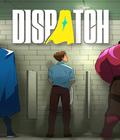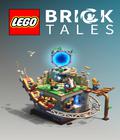The idea of playing with a virtual set of LEGO bricks is appealing, as the success of the many LEGO games over the years has shown. While TT Games may have defined the "stock" formula for LEGO adventures, other studios have been dipping their toes into the water recently with alternative takes. Builder's Journey, an intriguing half-game/half-art-piece came out last year, and LEGO Bricktales debuts this week.
Unlike Builder's Journey, which felt more experimental, Bricktales is designed as a traditional kid's adventure game. The selling point is that every level is a LEGO diorama. Unlike most of the TT Games LEGO adventures, there are no non-LEGO pieces to be found here. Every level is brick built, and to progress, you're going to need to do some brick building of your own.
As a lifetime LEGO fan, I found each of the brick-built levels to be incredibly impressive. The team at Clockstone has done an amazing job of designing the levels, to the point that I found myself spending time just looking at each of the dioramas. While some of the design choices were made for gameplay reasons, they all look like they would be pride of place in someone's LEGO collection — if you could afford them, that is. Each level is comprised of an impressive number of bricks and would not be cheap to build in real life.
The story driving the game is one of a child helping his grandfather restore an amusement park. Doing so requires using a portal to travel to other lands and help the locals. This earns you happiness energy, which can be used to restore the park. With the basic framework set, you're off on your adventure.
Levels are designed with gating in mind. Each of the different levels that you visit unlocks a new power, which gives you access to more areas. Completing the story bits in each level allows you to move onto the next one, but there are collectible bits and hidden treasures that are meant to entice you to return to previously completed levels and spend more time exploring.
One element that surprised me was how much text there was in the game. Bricktales doesn't have voiced characters, but the developers chose to not go the mime route. Instead, every interaction is carried out via text boxes. Unfortunately, the humor used comes across as a touch repetitive. By the end of the first level, I wished the interactions had been a little more direct. After all, I wasn't here to read the story; I wanted to build some LEGO creations.
Building LEGO creations is the core of the puzzle-solving gameplay in Bricktales, but it's also the game's Achilles heel due to a very finicky piece placement system. I started off the game going for creativity in my builds, but after a few hours of playing, I shifted to simply meeting the target goals for each puzzle.
I had assumed that playing the game with a keyboard and mouse on the computer would be ideal for building, but using a controller ended up being the better option. It's still not perfect, but it's better than the mouse.
Where did the build controls go wrong? The developers tried to make the controls too smart.
When you're trying to assemble something in 3D space, precision is key. Moving pieces stud by stud is often a necessity. It's not what I got. Moving pieces around in the build interface, the game tries to guess what you want to do. It often guesses wrong. For example, if I have a few pieces built and want to put another piece on top, I would expect it to move into place when I push the piece toward the existing group. Instead, the game skips it to the other side of the built pieces.
After getting frustrated by constantly misplacing pieces by a stud or two, I started moving my piece into position and then moving the camera around to make sure my alignment was accurate before dropping it into place. This caused another issue, as moving the camera sometimes caused the active piece to move away from where I wanted it to be. I would move the camera, then nudge the piece, and it would snap to a new location. This was rather unintuitive.
Despite the issues, I was able to come to grips with the controls. It just generated a level of frustration that was unnecessary. Since the building aspect is the draw of the game, I expected it to be extremely polished.
Once you get past the initial control hump, it's rewarding to see your creations take shape within the game world. You are constrained by length/width/height parameters for each build, but beyond that, the sky's the limit. You can build as you see fit, choosing from a pre-set selection of pieces. That's the puzzle aspect, as some builds are more challenging than others, given the pieces you have to work with. You also have to make sure your creations are stable. A bridge that falls down when someone walks on it isn't a very good bridge.
After you have successfully passed each build challenge, you can return and do it again with a larger selection of pieces. With the extra pieces on hand, the challenge disappears, but it does allow you to boost the creativity. Initially, you are limited in your color selection for the extra pieces. You can buy extra colors in-game by collecting items and visiting the local merchant. The same is true for the player minifig. You might start the game looking like a LEGO version of Bob Ross, but you're free to customize your look. New threads are available in the in-game store.
LEGO Bricktales deserves credit for trying new things and incorporating the core building experience into gameplay, but the game doesn't quite hit the mark when it comes to polish. That said, if you're willing to be patient with it, there is fun to be had. It's just not as direct as putting together an actual LEGO set.
Score: 7.0/10
More articles about LEGO Bricktales











 LEGO Bricktales lets you embark on a charming, digital adventure with beautiful dioramas, creative puzzles, and intuitive brick-by-brick LEGO play.
LEGO Bricktales lets you embark on a charming, digital adventure with beautiful dioramas, creative puzzles, and intuitive brick-by-brick LEGO play.








